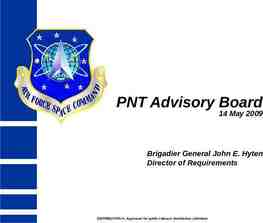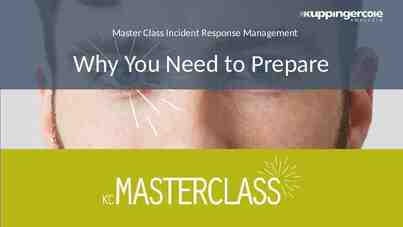Dual Diagnosis – A Community Led Response Jennifer Clancy Coordinator
8 Slides138.73 KB

Dual Diagnosis – A Community Led Response Jennifer Clancy Coordinator Clondalkin Drug & Alcohol Task Force

Background Noticeable increase in service users presenting to substance misuse services with more severe co-occurring disorders and complex needs that were resource intensive. Little or no interagency work between substance misuse services and mental health services. These issues highlighted at T&R subgroup and the need for a coordinated approach locally. Initial meeting with Community Mental Health Team took place in August 2014. Similar issues identified by CMH re: more complex cases, resource intensive, the need for formal case management.

The Process Social worker and CNM joined the T&R sub group of CDATF. A presentation of the NDRF given to the clinical team of CMH. A training needs analysis from CMH and local substance misuse services undertaken by CDATF in relation to dual diagnosis. A training programme solely for CMH including: Drug awareness. Harm reduction. SAOR (Screening & Brief Intervention). Other training that CMH were included on was: MAPA Domestic Violence Cannabis training Solution focused brief therapy

Community Mental Health also delivered training in the substance misuse services regarding medication, purpose and side effects. Presentations of each of the substance misuse services took place at the clinical meetings of CMH and vice versa. 2016 as part of the T&R work plan saw the establishment of the Dual Diagnosis Working group. This group consisted of the following members: CDATF Rehabilitation Coordinator (Chair) CASP Clondalkin Tus Nua Neart LeCheile Clondalkin Travellers Development Group Community Mental Health Team

Dual Diagnosis Working Group Key areas of work / discussion has been the following: Experiences within all projects of dual diagnosis and gathering baseline data of the issue locally. Gathering baseline data. Barriers / challenges in relation to service provision / integrated care pathways for service users (Addiction services and Mental Health services). Current gaps. Training needs. Formalising relationships between mental health services and addiction services using a case management approach.

Formalized Share Care CDATF worked closely with the management of 3 local community drug services and the clinical team in CMH to draft a document to formalize shared care locally. This process allowed for the needs of each service, the resources available and best practice to be considered when drafting an MOU. This MOU was drafted and states that those who have a key worker in both services and give consent then case management will be central to a formal shared care plan between the services. MOU signed in September 2017 and launched at a dual diagnosis seminar. The seminar highlighted the process to date and included inputs from Mike Scully (HSE) & Liam MacGabhann (NACD Research). Consultation took place with all attendees to identify specific training needs and the ongoing role of the CDATF in the process. Training plan commenced in April 2018 (supported and funded through CDATF).

Outcomes Reduction in duplication of services. More integrated care pathways for those with co-occurring disorders. Better understanding of both sectors of roles / responsibilities and challenges. Reduction in hospital stays for 3 complex cases locally. Improved information sharing and formalised shared care planning leading to early intervention to those requiring additional supports. CDATF to support local drug services, Traveller Project & youth services to become WRAP facilitators and provide WRAP as part of service provision.

Factors in Success to Date Representation of the drug services and CMH on the T&R sub group and the dual diagnosis working group. An understanding of what each services does and the rationale. Drug services changing assessment tools (e.g. using AUDIT / DUDIT CUDIT and HAD). CMH using screening tools. The process of relationship building and formalizing what we were doing locally allowed more seamless information sharing, more integrated referral pathways and was seen as a supportive measure to the service user but also the staff in both sectors dealing with those with dual diagnosis. Training and development – being supported by the CDATF to formalize relationships, deliver training locally and delivering specific training and development pieces to both sectors was beneficial. Having a lead driver for this piece locally.






